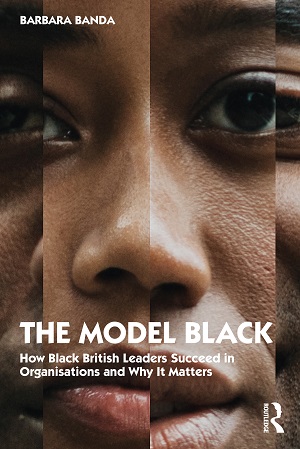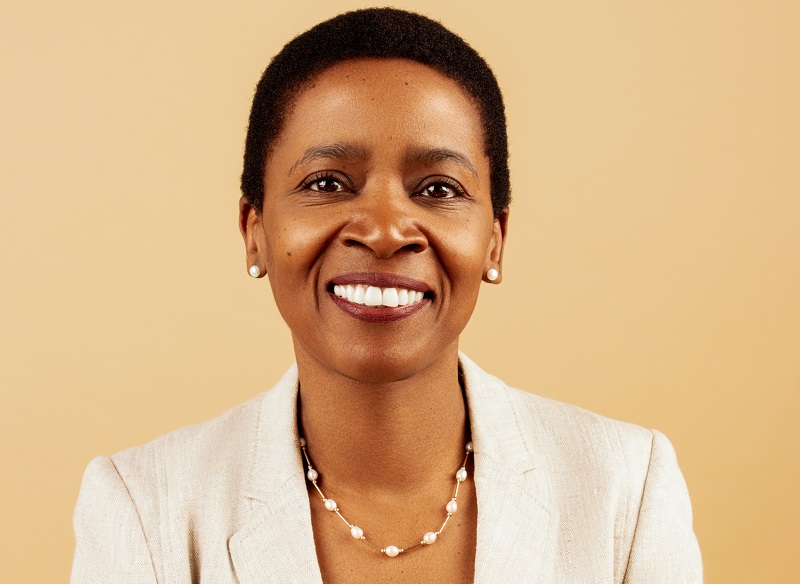People who don’t know where to start, what to do or what to say when discussing and trying to understand race in the workplace will find the answer in a new book, The Model Black: How Black British Leaders Succeed in Organisations and Why It Matters.
Written by Barbara Banda, founder of leadership consultancy, BarbaraBandaConsulting, it is based on interviews with 30 successful Black leaders who describe the challenges they encountered in forging their careers in the ‘white’ workplace.
While it identifies the attributes that Black leaders shared in becoming successful, the book is not a bible for how to behave, which Banda is keen to stress. “It’s not a recommendation, it’s not advice, it’s not about being right or wrong,” she says firmly. “The book provides insights and ideas required to have positive conversations about race at work and to create environments where Black leaders can thrive.”
Banda was not surprised by any of the stories that resulted from the interviews, which she believes will be familiar to Black readers. This is why her book is aimed at white leaders.
“The response I’ve been getting from white people who’ve read the book is that they’re shocked,” she reveals. “My response to them is, ‘I’m shocked you’re shocked.’ Almost zero Black people will be shocked when they read the book. But that, in a way, has reinforced the need for the book. The other response I’ve had is, ‘gosh, we need to do something.’
“A lot of the readers of the book, whom I’ve spoken to, are the ones who are already interested in the area. I would love for people who think it is the last thing they want to look at to pick it up.”
Overcoming self-limiting fear
Banda originally got the idea for The Model Black while studying for a master’s degree, which included research on objectivity in performance management among Black workers.
“I interviewed a few people, mainly family and friends, to understand their work experiences,” she explains. “I thought that no one was talking in a mainstream way about these day-to-day experiences. Then, when I left full-time employment in 2017, although I was running my own business alongside it, I wanted to write the book but pondered the consequences of ‘a successful Black woman’ talking about the challenges of being Black.’ The gut might tell you to do it, but your pragmatism says that could be career limiting.”
During the COVID-19 lockdown, Banda managed to overcome her self-limiting fear and push ahead with conducting interviews and writing. She was spurred on by the fact that there was nothing available about successful Black leaders in organisations, particularly from a UK perspective. Their stories were not being told, and they tended to “get on with it, not complaining, and not be victims.” They were building successful careers while “putting up with a whole load of stuff.”
She points out: “What’s interesting is that I doubt that many of those who speak out against injustices at work actually become successful in organisations. They get labelled, exited, or they leave of their own accord. In one of the early chapters, I say Black people do all the same things as white people. Where it becomes different is the scrutiny that they’re under. They are watched all the time, they can’t be average, and if they make mistakes, those mistakes are amplified.
“They’re also constantly having to deal with the perceptions around how they ought to be. We are not facing evil white people. We’re in a country where everybody means well – I don’t believe that anyone gets out of bed and wants to harm people or make their lives difficult.”
Extra burden of being Black
Banda has found that often white people don’t know how to broach conversations around race and difference with Black people and takes exception to those who say they don’t see colour. One of the interviewees for the book told her that not seeing colour meant overlooking their heritage, diversity and rich culture. In other words, it acted as a get-out clause for ignoring the pain Black people experience daily.
Her research also revealed that because many organisations were unsure how to make their workplaces more inclusive, it was beholden to Black employees to come up with the answers and solve the problems themselves. “A lot of the millennials I interviewed told me that, on top of their day job, they were expected to be on committees to decide what the organisation should do to make it a better place for them,” she reveals.
“That was part of an extra burden of work and being Black. It wasn’t even recognised as something that should be put into their performance plan, for example.”
The Model Black is her definition of the archetypical successful Black British leader. Banda’s research showed that many of them had things in common, including squaring – becoming more like the majority culture – being careful about speaking up and ‘softening’, particularly men.
The book also talks about the attributes they shared to be successful, such as having a supportive Black community and how they adjusted in the workplace. It’s not telling people that they must acquire these attributes to get ahead and question whether it’s right or fair for Black people to have to conform to a type that society is more comfortable with.
At the same time, it makes clear that not all Black leaders are the same. Says Banda: “People who are not educated in the UK, or not in the state system, had a very different sense of self.
Essentialist terms
However, she has had some negative experiences, such as being questioned whether she was in the right place at an airport when queuing for business class or being the only one in first class on a train to get their ticket checked. But she recalls how such treatment didn’t occur when she travelled with a white companion.
In talking about Black and white in her book, Banda says these are essentialist terms and that there was a whole spectrum of colours and races. But these essentialist terms made it easier to understand and write.
The Model Black is written to be read one chapter at a time and used for individual reflection and personal growth and at a group level. There are hints, tips, and suggestions where HR might reflect on doing things differently.
She believes that Black people bringing their genuine selves to work is still an aspiration. Some organisations were ready for diverse employees to be themselves, whether in their physical appearance or talking about their lives and interests outside work and to accept that they bring different perspectives.
“I never wore a Kente to work, for example, because I thought it might exclude me from certain clients,” Banda confesses. “Maybe I was overreacting, but I didn’t take the risk.
“Western organisations are built around middle-class white men, whether we like it or not. I coined the term ‘diverse similarity’, which is we like the idea of diversity as long as it’s similar enough.
“I would love a national debate around The Model Black, and I know that sounds ambitious. That could then be extended to the model female leader or the model gay man. What is acceptable and what isn’t? Ultimately, I would like the book to be a helpful discussion document. Talk to somebody about it and see where the conversation takes you.”

The Model Black: How Black British Leaders Succeed in Organisations and Why It Matters is available on Amazon.









